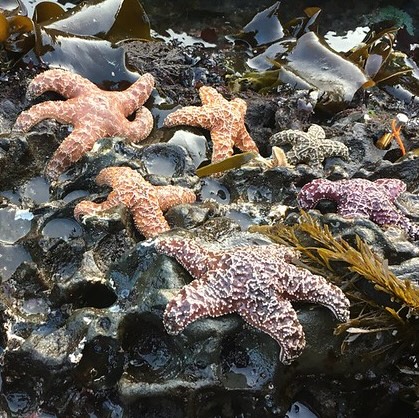Research from scientists at Oregon State University and Cal Poly San Luis Obispo indicates that the ochre sea star population is displaying encouraging signs of recovery along the Oregon Coast. Following a significant population decline due to a wasting disease epidemic nearly a decade ago, a “baby boom” of these sea stars has emerged, potentially marking a pivotal turn for the species.
The study, published in the journal Ecosphere, does not definitively link the recent population surge to the previous epidemic of sea star wasting disease. However, it highlights a promising trend. Researchers assessed ochre sea star populations at eight different locations over a span of 23 years. They observed that many of the young sea stars from the boom have reached adulthood, with current population numbers now at or exceeding levels seen before the disease outbreak.
Lead author Sarah Gravem, an assistant professor at Cal Poly and former postdoctoral researcher at OSU, stated, “After declines in sea star numbers of up to 84% in 2014, we quickly saw an 8,000% increase in young sea stars landing on shore.” This resurgence has significant ecological implications. At approximately three-quarters of the study sites, ochre sea stars have resumed their role as keystone predators, primarily preying on California mussels.
The predation by sea stars allows for greater biodiversity, as it prevents mussels from forming dense beds that can dominate intertidal zones and hinder the growth of other species. Gravem noted that sea stars are now large enough to consume mussels at rates comparable to those before the epidemic.
Researchers Bruce Menge, a distinguished professor of integrative biology at OSU, echoed these findings, asserting that sea stars have become abundant and are effectively managing mussel populations. “We showed that sea stars have now grown abundant and large enough that they are eating mussels at similar rates to before the epidemic at most sites in Oregon,” he said.
Despite the positive signs, there remain challenges. The average body sizes of the sea stars are still 25% to 65% smaller than they were pre-epidemic at nearly all locations, and the populations fluctuate more than in the past. These fluctuations are attributed to ongoing waves of young sea stars entering the ecosystem and intermittent resurgences of the wasting disease.
The nature of the connection between the initial decline of the ochre sea stars and the subsequent baby boom is still not fully understood. Gravem speculated, “It’s certainly possible they are linked, which would mean these sea stars may be resilient to mass mortality events. It is also possible that the baby boom was unrelated to the disease, and simple luck enabled this relatively rapid recovery.”
Sea star wasting disease, which causes lesions and twisted limbs, is linked to a strain of the bacterium Vibrio pectenicida. The specifics of this disease were only recently identified, with significant contributions from a collaborative effort involving the University of British Columbia, the University of Washington, the U.S. Geological Survey, and the Hakai Institute, whose findings were published in Nature Ecology & Evolution.
As the ochre sea stars continue to show signs of recovery, ongoing research will be critical in understanding the dynamics of their populations and the broader ecological implications for the Oregon Coast’s intertidal zones.







